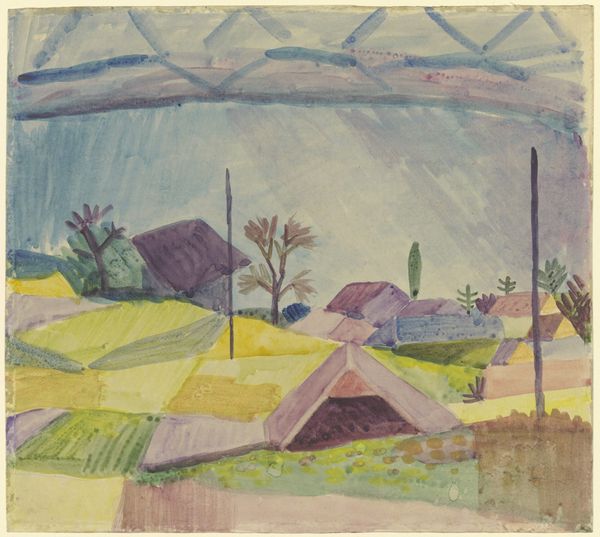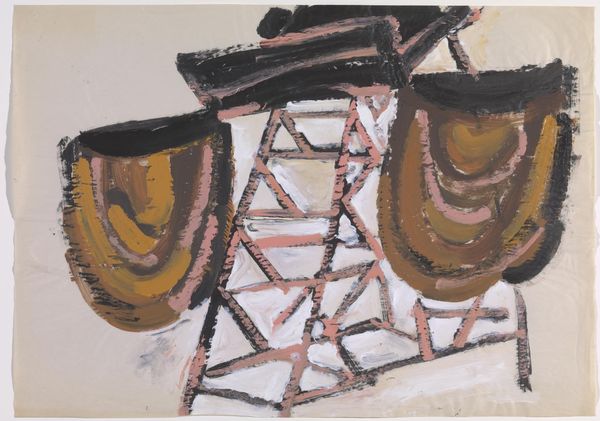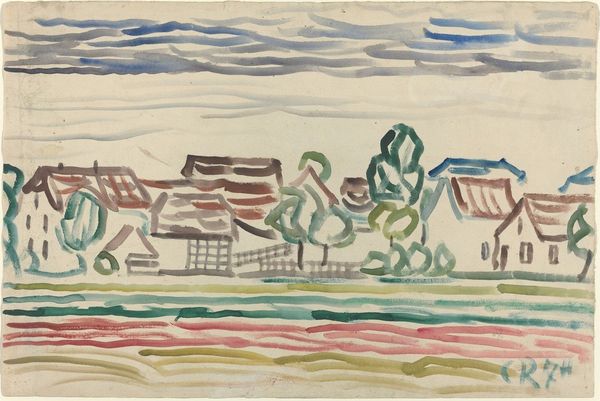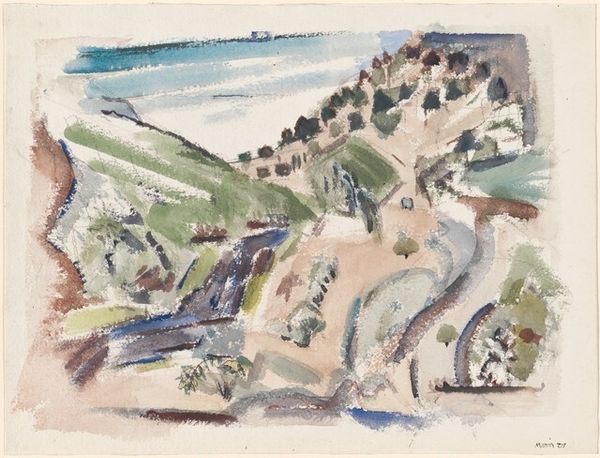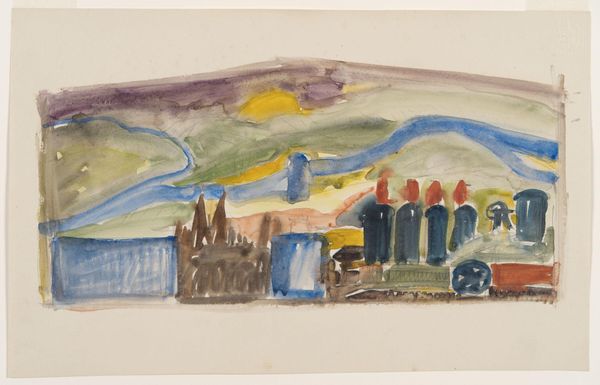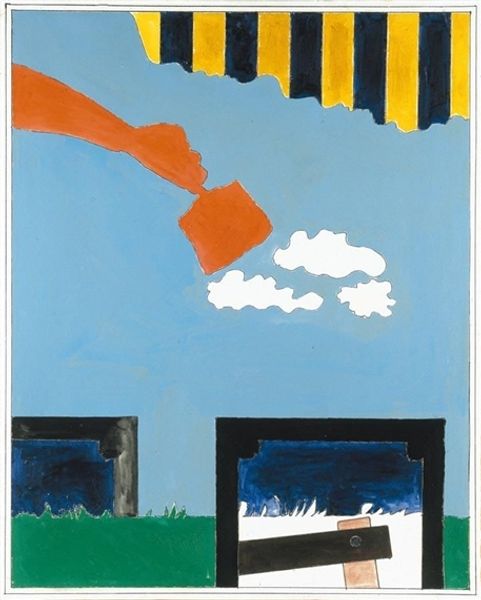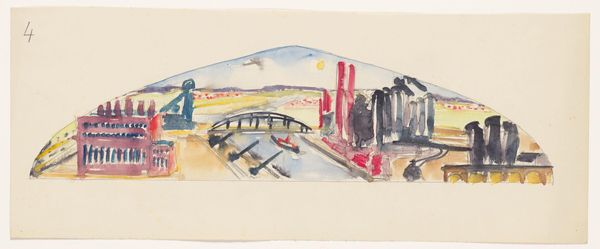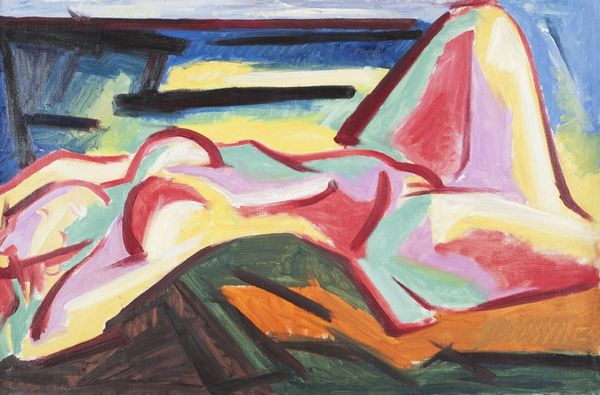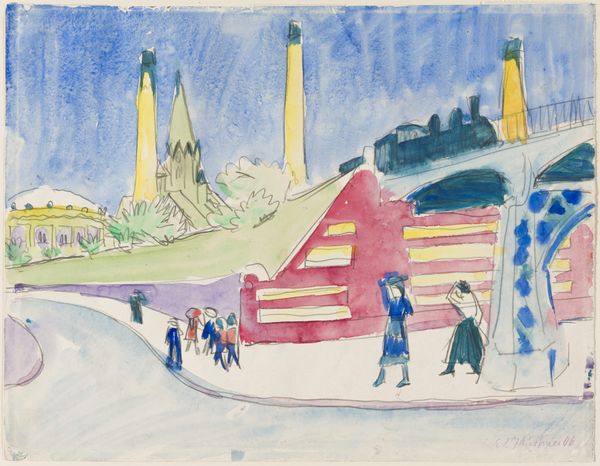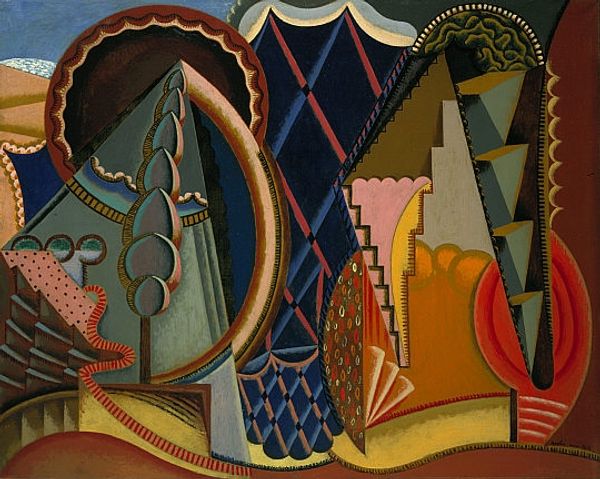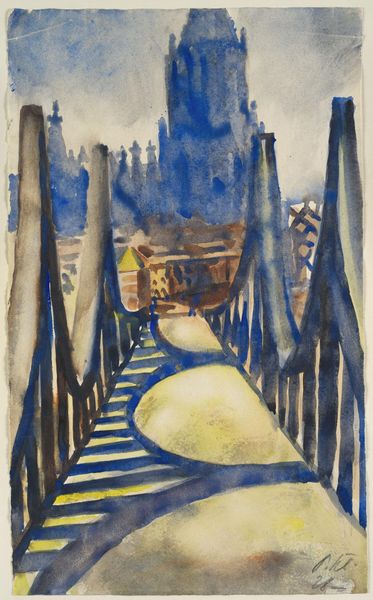
painting
#
painting
#
landscape
#
social-realism
#
naive art
#
line
#
modernism
#
regionalism
Copyright: William H. Johnson,Fair Use
Editor: Here we have William H. Johnson’s "Lunchtime Rest" from 1941. It's a vibrant painting depicting laborers at a work site. The simplified forms and bright colors almost give it a childlike quality, despite the subject matter being quite serious. What are your thoughts on the overall composition and how it communicates meaning? Curator: Let's look closely at the formal structure. Notice the flattened perspective and the bold use of line. Johnson is reducing the scene to its essential elements. The simplified forms emphasize shapes. Consider how the diagonal lines of the tracks and resting figures create a dynamic contrast with the verticality of the trees and buildings. This interplay between the diagonal and the vertical contributes to a sense of tension. Editor: So you're saying the simplified forms and color choices aren't just naive, but strategically used? Curator: Precisely. The simplification pushes us to consider the essential nature of the scene and the people. It is about a structural observation of shape, line, and the interrelationship. The color also has that purpose. The blocks of color and high contrast demand us to study the scene to understand the intrinsic nature. What does the formal rendering say to you about their human situation? Editor: That makes a lot of sense. Initially, the apparent simplicity was a little deceiving, but I now see the artist is carefully manipulating formal elements to draw our attention to the human story. I had thought the color and primitive rendering were to create some childlike feel, but they serve more of a way to emphasize an important quality, making them somewhat allegorical. Thank you for helping me appreciate how the artistry adds so much more dimension. Curator: And you've helped clarify my vision as well. Focusing on the aesthetic brings many considerations that might have been missed by only looking at the cultural context.
Comments
No comments
Be the first to comment and join the conversation on the ultimate creative platform.

